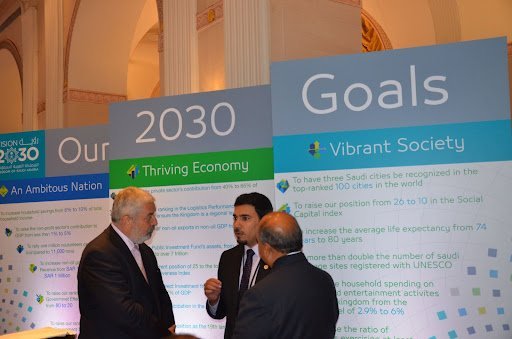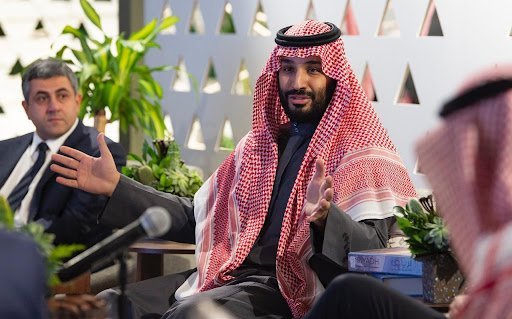Saudi Arabia in a Post-Oil World
Saudi Arabia's Vision 2030 and Sustainable Development Goals 2030. Photo: Sangita Khadka/UNDP
Over the past two decades, the need to transition away from fossil fuels has become clear. Climate change has begun to increasingly impact the world, and worldwide acceptance of the theory has increased. In addition to the environmental impact, the supply of fossil fuels is finite and will inevitably run dry. Thankfully, these concerns have been met with increased investment and deployment of clean energy alternatives.
Sales of solar power, for example, have increased 25 percent from 2019 to 2020 in the US. Overall, solar and wind represented over 80 percent of new power capacity in 2020, and 100 percent of new power capacity in the first quarter of 2021.
However, these changes and projections for the future have left some countries with difficult prospects. In 2020, over 60 percent of Saudi Arabia’s exports were petroleum, while over 40 percent of the Saudi GDP is reliant on oil. In the past, these revenues have allowed Saudi Arabia to become one of the richest countries in the world. In 2017, Saudi Arabia was 17th in GDP per capita (PPP). However, with the phase-out of fossil fuels, the future looks bleak.
In response to the long term trends in the oil industry, the Crown Prince Mohammed Bin Salman introduced a new economic plan called Vision 2030. This plan focuses on diversifying the Saudi economy to thrive in a post-oil world. It contained a huge number of initiatives, from tourism to manufacturing, along with a number of high profile collaborators. An emphasis on technology is at the core of many of these transitions.
Explicitly, the plan notes that “sophisticated digital infrastructure is integral to today's advanced industrial activities. It attracts investors and enhances the fundamental competitiveness of the Saudi economy.” Refusing to abandon the energy sector, Saudi Arabia has recently committed to direct 50 percent of new investments into renewable power resources.
The huge economic reserves built from past reliance on fossil fuels have allowed for massive investments in a variety of projects to accomplish these goals. For example, in 2017 King Salman approved a $3 billion dollar investment in New Taif. This project aimed to build a new airport, residential center, and technological oasis.
This project is far from an exception, with billions being poured into a variety of other similar projects. In addition to economic planning, Vision 2030 set out to empower women. For example, women were granted the right to drive in Saudi Arabia in 2018. However, these social initiatives have more broadly been a failure. In 2021, Saudi Arabia was ranked 147 out of 156 in the Global Gender Gap report, representing the progress that is still to be made.
SG Zurab Pololikashvili with Crown Prince Mohammed bin Salman at the CEDA Workshop on the Tourism Sector Photo: Brambo Ab/ UNWTO
A wide set of challenges have arisen since the outlay of the plan. Notably, the killing of journalist Jamal Khashoggi caused a number of large economic players, such as Blackrock and JP Morgan, to abandon the 2018 “Davos in the Desert” conference. Similarly, Richard Branson withdrew from his role in the plan in 2018 for the same reason. More recently, the Covid-19 pandemic has brought economic trouble to Saudi Arabia, threatening the plans for Vision 2030.
The complex circumstances have led to a variety of projections to be made about the outcome of Vision 2030. Some have proposed that the program is doomed due to the concentration of power in Saudi Arabia and the prevalence of corruption in the Saudi government. Others have suggested that technological investments will allow for Vision 2030 to bring prosperity to the next generation of Saudis.


